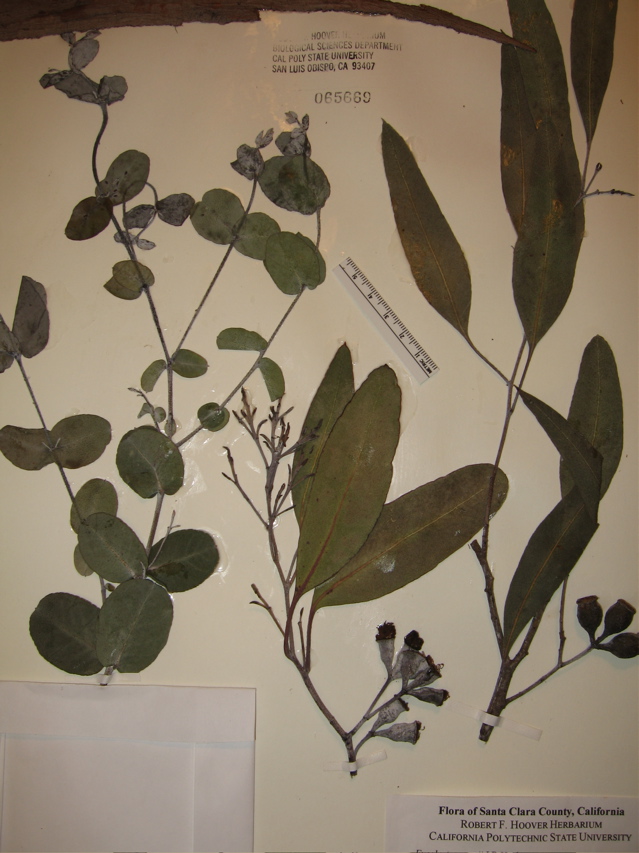Eucalyptus gunnii
 cider gum
cider gum

In the Hobart Town Almanac for 1830 we read “Specimens of that species called the cider-tree, from its extruding a quantity of saccharine liquid resembling molasses. When allowed to remain some time and to ferment, it settles into a coarse sort of wine or cider, rather intoxicating if drank to any excess.” When the Royal Greenwich Observatory – where the brass meridian was laid down that defines the international zero for longitude (after serious competition with the Paris meridian) – was moved to Herstmonceux Castle, the Astronomer Royal of the day, fresh from his post as Commonwealth Astronomer at Mt. Stromlo, Canberra, had cider gums planted on the outer edge of the moat. Seeds from these trees were germinated at Site 515 (3185 Alpine Road), where two substantial trees are to be found. (Dr. Matt Ritter verified that cider gum was present at this site as of May 2006). One day some Stanford seeds should be returned to Mt. Stromlo to complete the circumnavigation.
Our trees are doing very well in pure adobe without watering; a proportion of small, bluish juvenile leaves enhances the general appearance. Cider gum is a frost tolerant tree, one of few eucalypts to be seen in English gardens.
Related material: Eucalyptus checklist.
About this Entry: The main text of this entry is from the book Trees of Stanford and Environs, by Ronald Bracewell, published 2005. Ritter note added ca. 2007 by John Rawlings. Sairus Patel removed mention of examples on Pasteur Drive near Sand Hill Road; perhaps the notable E. nichollii plantation there was meant?



